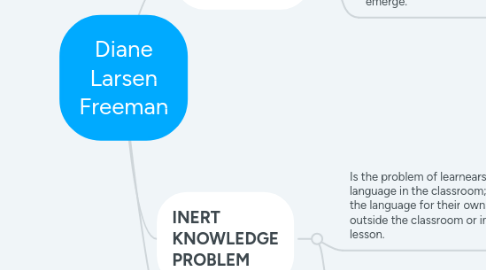Diane Larsen Freeman
Door Bian BustRot


1. COMPLEXITY THEORY
1.1. Is the study of complex dynamic adaptive systems that is interconnected with the environment and comprised of many components in which new patterns emerge.
1.1.1. Student learners language interact through iterative direct interaction over and over again, because that, the students create a pattern by using the language meaningfully for their own purposes and so develop a non-ending process that counters the tendency to see the learner language as deficient compared to native speaker language.
2. INERT KNOWLEDGE PROBLEM
2.1. Is the problem of learnears while learning a language in the classroom; they can't use the language for their own purposes outside the classroom or in a subsequent lesson.
2.2. JAMES GLEICK: Act of playing the game.
2.2.1. Is the act of using language meaningfully as a way of changing the grammar in the mind of the language user
